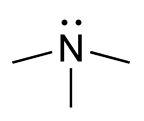
Photo from wikipedia
Objective Previous studies have demonstrated that trimethylamine N-oxide (TMAO) and its precursors, including choline, betaine, and carnitine, are closely associated with blood pressure (BP) changes. Nevertheless, with the limitation of… Click to show full abstract
Objective Previous studies have demonstrated that trimethylamine N-oxide (TMAO) and its precursors, including choline, betaine, and carnitine, are closely associated with blood pressure (BP) changes. Nevertheless, with the limitation of reverse causality and confounder in observational studies, such a relationship remains unclear. We aimed to assess the causal relationship of TMAO and its precursors with BP by the Mendelian Randomization (MR) approach. Method In this study, two-sample MR was used to reveal the causal effect of TMAO and its precursors on BP. Pooled data of TMAO and its precursors was from genome-wide association studies (GWAS) which includes summary data of human metabolome in 2,076 European participants from Framingham Heart Study. Summary-level data for BP was extracted from the International Consortium of Blood Pressure-Genome Wide Association Studies. Inverse variance weighted (IVW), MR Egger regression, Maximum likelihood, Weighted median, and MR pleiotropy residual sum and outlier test (MR-PRESSO) were used in this MR analysis. Results A total of 160 independent SNP loci were associated with TMAO and three precursors, including 58 associated with TMAO, 29 associated with choline, 44 associated with betaine, and 29 associated with carnitine, were selected. MR results suggested that a 1 unit increase in TMAO should be associated with a 1SD increase in systolic BP mmHg (beta: 0.039, SE, 0.072, p = 0.020). Additionally, our findings also indicated that a 1 unit increase in carnitine should be associated with a 1SD increase in systolic BP mmHg (beta: 0.055, SE: 0.075, p = 0.039). This result was also confirmed by sensitivity analysis methods such as Maximum likelihood, MR-PRESSO, and Weighted median. No effects of betaine or choline on systolic or diastolic BP were observed in the present study. Conclusion Our study provides evidence of a causal relationship of TMAO and its precursors with BP, suggesting that mediating the generation of TMAO would be beneficial for lowering BP.
Journal Title: Frontiers in Cardiovascular Medicine
Year Published: 2022
Link to full text (if available)
Share on Social Media: Sign Up to like & get
recommendations!